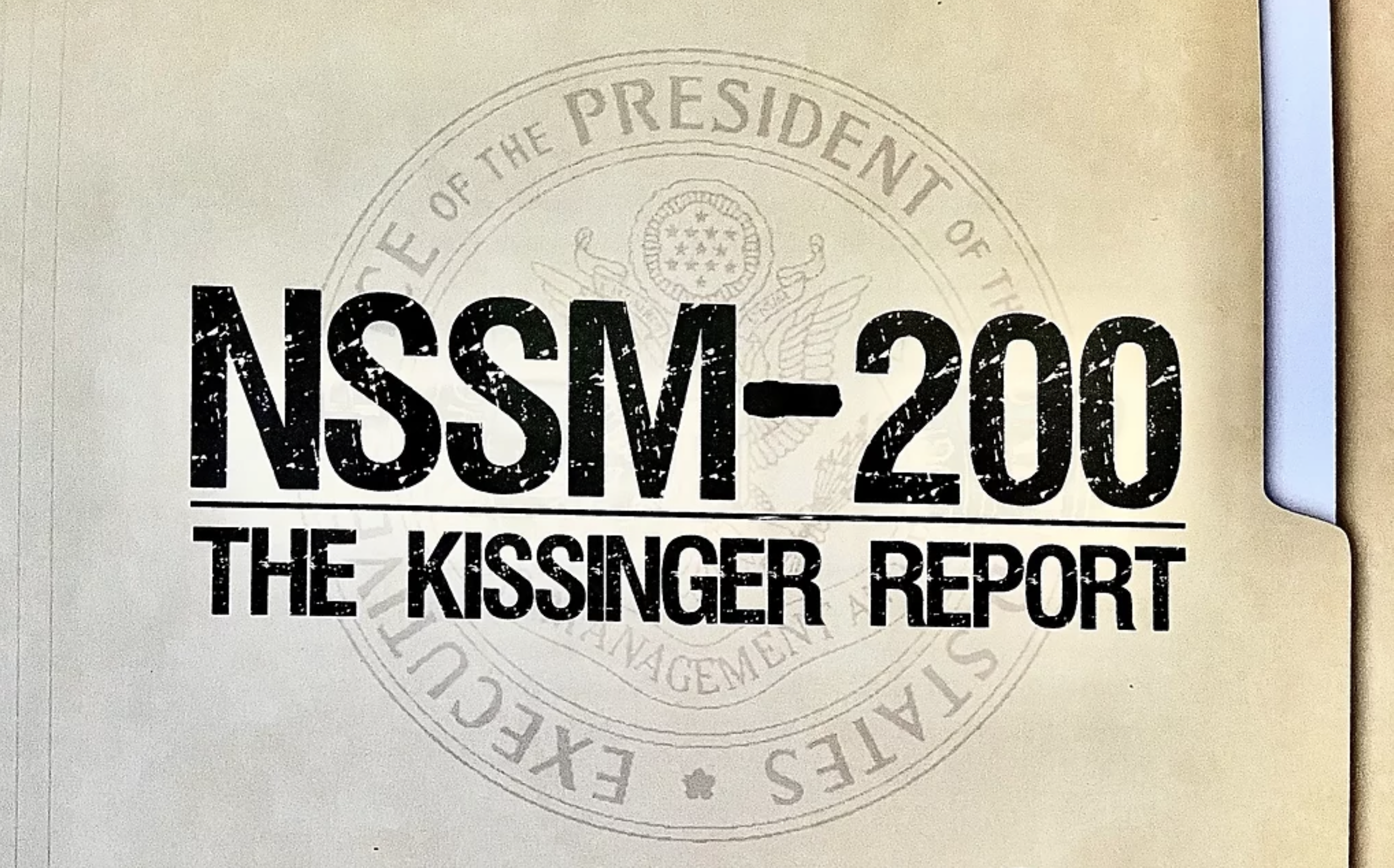World population growth since World War II is quantitatively and qualitatively different from any previous epoch in human history… total growth rates are close to 2 percent a year, compared with about 1 percent before World War II, under 0.5 percent in 1750-1900, and far lower rates before 1750. -Executive Summary, The Kissinger Report In 1974, the United States National Security Council, led by Henry Kissinger, completed a classified report, National Security Study Memorandum 200 - Implications of Worldwide Population Growth for U.S. Security and Overseas Interests A.K.A. The Kissinger Report. Due to the sensitive nature of its content, it took another 15 years before this report was declassified in 1989. The Kissinger Report’s purpose was to describe and analyze population growth, especially in the least developed countries ( LDCs ), and the implications for U.S. national security. This report forecasted world population to grow from 4 billion people in 1974 via 6.4 billion in 2000 to 12 billion in 2075. This kind of population growth was deemed unsustainable and would cause major problems: famines and ecological disasters; lack of economic development, civil unrest and mass foreign migration. This instability would be a threat to the countries involved, but also to the national interests of the U.S., since its import of minerals from those LDCs might be hampered. The report called for measures to limit the population to 6 billion by the mid-21st century and to an ultimate limit of 8 billion people, and for the promotion of contraception among 13 populous countries, including Pakistan, Nigeria, and Mexico.
123 pages
If you appreciate our work, please click here to make a donation
